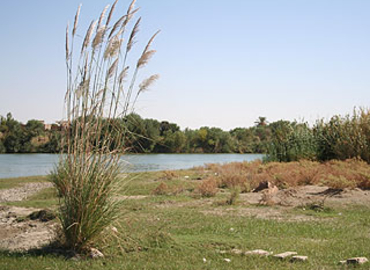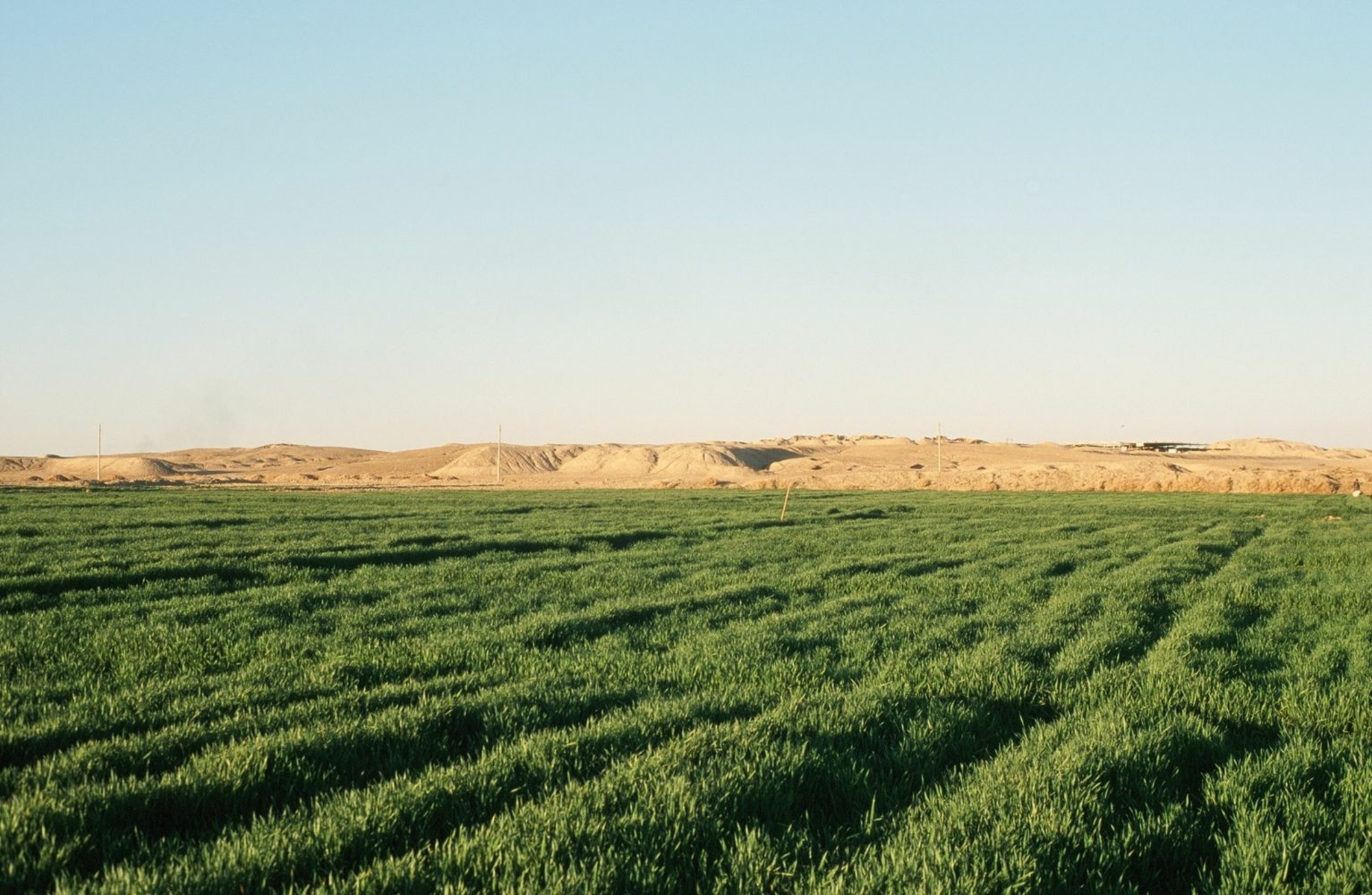


Mari was a new city founded on a natural terrace on the right bank of the Euphrates between Syria and Babylonia around 2900 BCE. Its prime location made it one of the most important Near Eastern cities of the 3rd and 2nd millennia.
This palace dating from the 2nd millennium is a unique example. Its exceptional state of conservation makes it possible to understand the characteristics of other Mesopotamian palaces known to date. The archives, paintings and furniture of the palace bear witness to the wealth and life of the court.

The north side, where the door was located, is on the right of the image.
Aviation française du Levant. Mission archéologique de Mari n° 1683b, 1937

Although recent conflicts have damaged the site of Mari, it was also looted in much earlier times. Archaeologists have identified evidence of ancient looting which disturbed the site’s stratigraphy on several occasions. During the Second World War, the site and excavation house in which the equipment was stored were hit by a further wave of destruction. History has repeated itself at Mari, but the damage is being analysed before any further archaeological activities are undertaken.
Mathilde Mura. Digital Globe Foundation with kind permission of Frank Braemer

© Jean-Claude Margueron/Mission archéologique de Mari – Archeovision